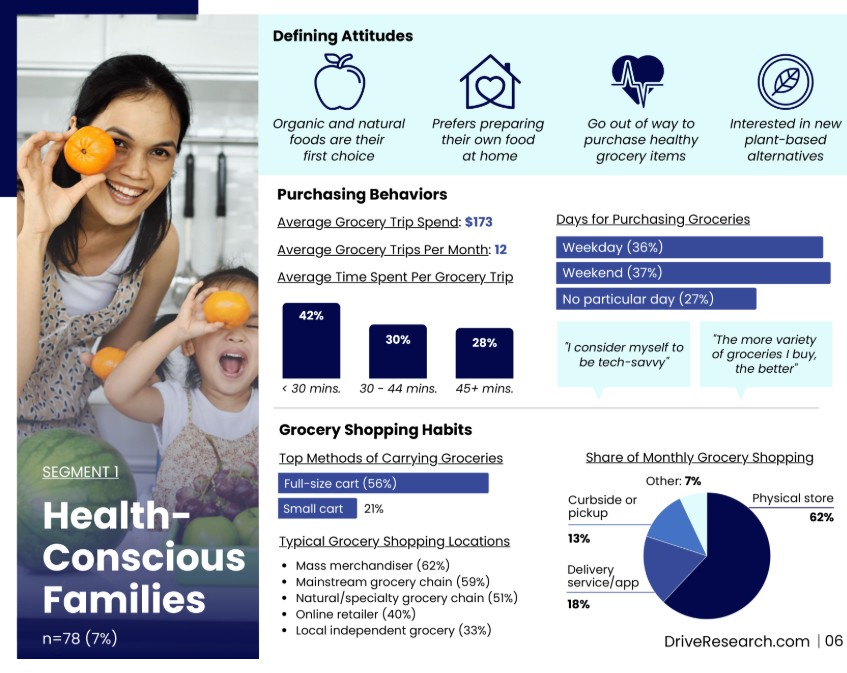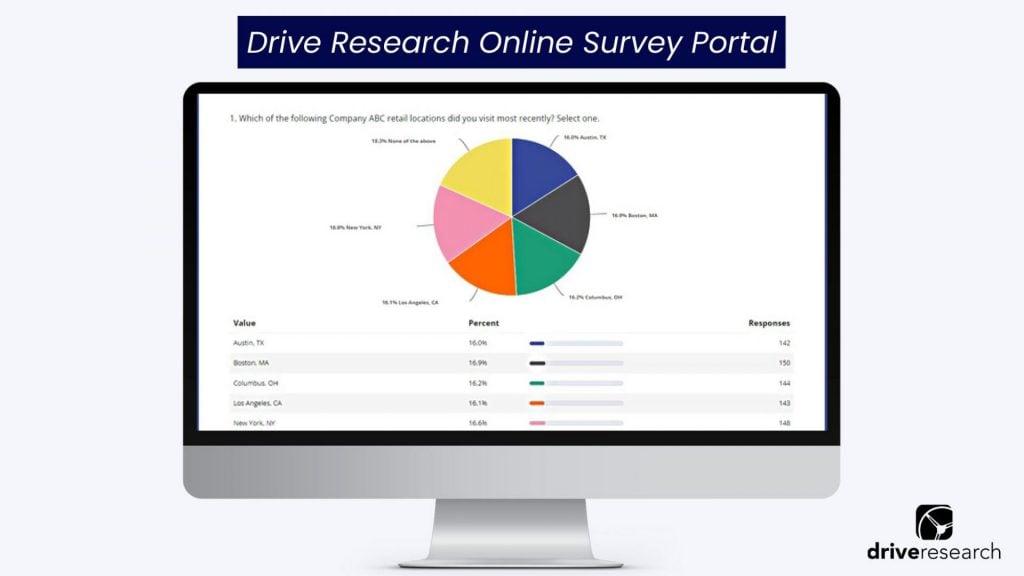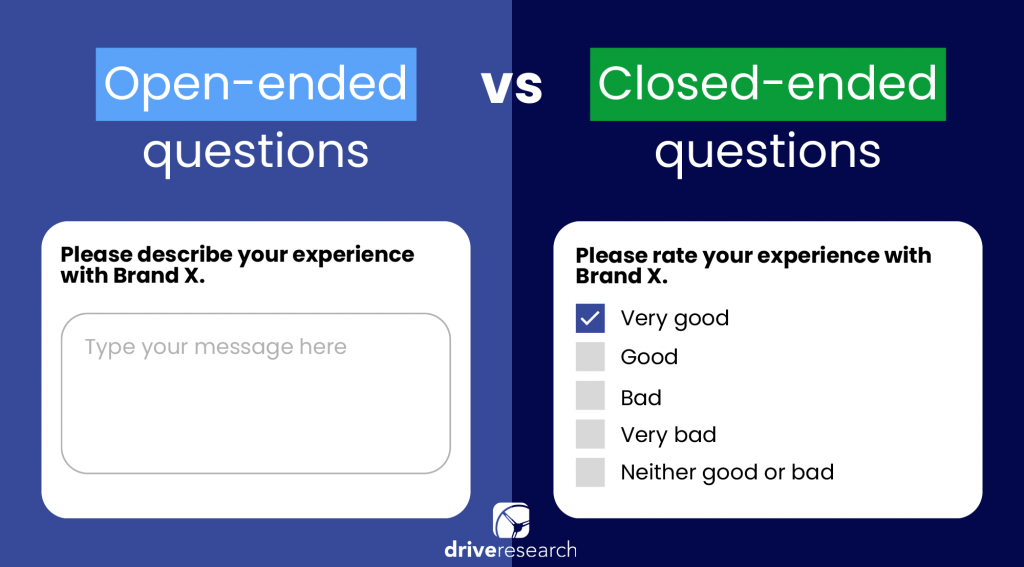
A common challenge among marketers is not seeing enough returns from their advertising efforts.
It’s frustrating to spend money and time on a campaign that generates zero results.
A surefire way to feel confident about investing resources into advertising is by testing its appeal first.
Advertising testing with market research enables businesses to test their copy, design, ad channels, and messaging strategies before they go to market.
In this blog post, we’ll explain more about advertising testing, its benefits, and how to run ad tests with market research.
What is Advertising Testing?
Advertising testing with market research involves using data-driven insights to fuel creative copy, imagery, word association, and more.
It is a process of asking questions about a company’s advertising messages in order to test out the effectiveness of a campaign or message
The questions included in ad testing may cover a variety of topics such as:
- What factors are most important to you in selecting [Brand, Product, Service]?
- Please review the image below and share what you like about the image.
- Review the images below for at least 10 seconds. Which of the images do you like the least?
- Please review the image below and share what you don’t like about the image.
- Thinking about the images you just saw, which of the following offers do you recall?
- After reviewing each of the offers below, what are the top 3 offers that are most enticing to you?
Asking these questions through advertising concept testing allows brands and marketing teams to better understand how their campaigns will be perceived by their target market before going out into the public.
Benefits of Creative Testing
Businesses spend a huge amount of money on advertising – and that number is only growing.
Why so much? Because advertising, whether it be on social media or Google, works. It helps businesses increase awareness and in turn revenue.
However, in order for advertising to be effective, it needs to both cut through the noise to reach and resonate with target buyers.
To accomplish this, pre and post-advertising testing are essential to assure marketing dollars are being well spent.
For a quick overview of more benefits of advertising testing with market research, watch our video below.
1. More accurate A/B testing advertising
The idea of A/B testing has existed for a while. Although, in many cases, it is used after time and money are already spent on designing the ads.
For instance, let’s say a car manufacturer runs advertising image testing on Facebook. They spend $500 on two ad sets and determine that…
- Ad A is blue and generates more link clicks
- Ad B is red and generates fewer link clicks
The car manufacturing brand then determines it should invest its remaining marketing budget in Ad A.
But, what if neither Ad A nor Ad B truly resonates with target buyers?
What if there are better colors, fonts, words, and graphics that should have been used?
Ad testing with market research reviews each of these components and more. It can also determine if Facebook is even a good advertising channel for the car manufacturer.
Recommended Reading: Conducting A/B Testing? Use an Online Survey for Better Insights
2. Increase sales and advertising ROI
Creating data-driven marketing campaigns is the most under-utilized asset according to 87% of marketers.
And for good reason.
Conducting advertising testing with market research helps businesses optimize their campaigns and messaging strategies, which can lead to increased sales and higher customer engagement.
It pinpoints areas of value and potential problems with ad copy or design before launching it.
This allows businesses to eliminate any potential errors in their campaigns before they start, saving them time and money down the line.
3. Improve advertising effectiveness among different audiences
Every customer is different. From preferences to buying behaviors to demographics.
Therefore, it’s hard for one single ad to relate to everyone.
Today, personalization is extremely important in marketing and advertising.
In fact, 90% of leading marketers say personalization significantly contributes to business profitability.
Luckily, an additional benefit of advertising testing is that it can group your customers into market segments based on common characteristics and traits.
Doing so will help to create more personalized ads that highlight what is most important or appealing.
For instance, keeping with the car manufacturing brand example above, let’s say they are interested in advertising copy testing.
Survey responses show that…
- Males aged 18-34 find price most important when choosing a car
- While females aged 28-45 believe safety features are most important
These insights can help design specific ads for these groups that emphasize price vs. safety and target them to the right audience online.
4. Identify new opportunities and trends
Advertising testing with market research can also help businesses identify new opportunities for growth.
By testing different messages and strategies, businesses can uncover new ways to reach their target audience and increase their customer base.
Additionally, testing can help businesses identify new trends in their industry, allowing them to stay ahead of the competition.
Types of Market Research for Advertising Testing
There are many different market research methods that organizations utilize to enhance their advertising strategies.
Advertising market research options provide actionable insights that can contribute to advertising that is correctly positioned and the audience is appropriately catered to.
Below are a few of the many advertising testing market research methods.
1. Ad Concept Testing Surveys
Ad concept testing is a process to develop and refine advertising campaigns and materials before they go public.
Similar to A/B testing, ad concept testing surveys ensure that the ad will meet your expectations and goals.
This market research method can help you anticipate how audiences will receive the ad and predict how it will perform.
Plus, because ad concept testing is often conducted through online surveys, the process is cost-effective and efficient.
Here are some common objectives that are answered for advertisers after ad concept testing is completed:
- Which version of the ad is most liked (can test colors, copy, fonts, images, etc.)
- If the ad copy and messaging are relevant and understandable to target audiences
- Which channels are most effective to send messages through during the campaign
- What part of the ad is most memorable to viewers
- Understanding their first impressions and judgments
- If the graphics and visuals are appealing and laid out properly.
Analysis of this data can help marketers edit, position, or enhance ad campaigns to be the most effective with their target audience.
Moreover, common reasons organizations conduct concept testing surveys are outlined below.
- For ad campaigns that surround sensitive topics. This market research method may show how consumers feel about the topic and the most appropriate way to approach it.
- For teams that are working with a new target audience. Ad concept testing can highlight the values, priorities, and reactions of that audience before public rollout, allowing a great first impression in the ad campaign.
- Deciding between multiple different creative options. Ad concept testing can be especially useful if your team has multiple strong ideas for an ad campaign. Consumers themselves can pick which ad resonated most with their values and wants.
- Feeling confident investing marketing dollars behind an ad concept. Insights may serve as proof of concept for leadership teams or investors, which can be useful for creative and new ideas that may not have been possible in the past.
Recommended Reading: Unique Benefits of Ad Concept Testing with Surveys
2. Campaign Evaluation Surveys
Evaluating campaigns is a vital part of the advertising process.
Evaluation throughout the campaign and at the conclusion can prove whether or not the campaign has reached its goals and objectives set in the planning phase.
There are a variety of ways to evaluate ad campaigns from social media, website, and email analytics – however they only tell half the story.
Metrics such as link clicks, impressions, and email opens don’t paint the full picture of your campaign’s Return on Investment (ROI).
Whereas, campaign evaluation surveys are great advertising market research methods because it gets a well-rounded judgment of the brand impact of your campaign.
Campaign evaluation surveys can reveal how your ads moved the needle for marketing KPIs such as:
- Improved awareness
- Changes in perception
- Increasing the likelihood to make a purchase
- Strong brand equity
Understanding the opinions of your target audience can often show more about the campaign than tangible results.
Market research can show the true value of your advertising and marketing efforts, and prove why significant time, resources, and budget should be invested into advertising.
Campaign evaluation surveys are conducted in two parts: pre-campaign and post-campaign.
The pre-campaign evaluation survey is necessary to create a benchmark to compare to at the conclusion of the campaign.
Once the post-campaign evaluation survey is completed you will be able to visualize how awareness or brand affinity, for example, improved due to the campaign.
These surveys can be catered to any objective that was set in the campaign, and it’s important that the objectives are formatted measurably as well.
3. Commercial testing with focus groups
Focus groups are a tried and tested market research method to support advertisers as they craft ad campaigns or commercials for their organizations.
In a focus group, a selected group of participants can view an ad and have a moderated conversation around their likes, dislikes, and key takeaways.
Additionally, like most modern market research methods, focus groups can be conducted online or in person.
Online focus groups are less expensive and are not limited by location when choosing participants, but the format may limit non-verbal cues and interactions between participants.
How to Run Ad Tests with Market Research
Now that you have a better understanding of what advertising testing is and the benefits of running them, let’s discuss how to accomplish a successful study.
The step-by-step process our advertising market research company follows when running an ad test with clients includes four steps:
Step 1: Design your advertisements
Hopefully, the design of your advertisements is based on research from the start.
This could be…
- Profiling specific buyers
- Understanding which channels to market on
- Using the correct motivational language
- Identifying buyer decision-making criteria
Guessing on this? You don’t have to. Consider conducting a customer segmentation survey to earn actionable insights into these components.
Here is an example of a customer profile from our grocery shopper segmentation study.

Once you have your ads designed, you’ll likely have several variations created. Perhaps an A/B or an A/B/C option.
Rather than basing the decision internally with your team or staff who have a horse in the race, think about using a third-party market research company to show the advertising options to real customers.
Step 2: Design your market research tool
There are many different types of market research to consider.
The three most common methodologies for A/B testing advertising are:
- An online survey to customers or non-customers
- A web survey to site visitors
- Focus groups with current or prospective customers
Each of these methodologies offers its own unique pros and cons.
1. Online surveys
The first option is reaching out to your customers or through a panel using an ad concept testing survey.
With this approach, you have the opportunity to show visuals of the ad or a video embedded in the survey to collect feedback.
The survey can test the likelihood to purchase, likes, dislikes, and improvements for the advertising concept.
We’ve only scratched the surface of using surveys for advertising testing. To get a more thorough understanding of the process, read our Ultimate Guide to Ad Concept Testing Surveys.
2. Web survey
The second option is using a website pop-up survey.
This is an especially great fit to test a landing page or intercept visitors on an e-commerce website.
It allows you to ask questions to site visitors in real-time within the interface of the site structure you may be testing.
3. Focus groups
The third technique for testing advertising effectiveness is focus groups – whether it be in-person or online.
As opposed to a high-level measurement, focus groups are qualitative market research meant to explore deeper.
In this setting, you can show advertisements, videos, and other types of creative to a group and ask questions to generate dialogue and feedback.
Step 3: Collect feedback
Once you choose your approach and methodology for advertising testing with market research, the next step is to collect feedback.
In this step, you receive answers to the questions you drafted out in your survey or moderator’s guide.
The timeframe for how long it takes to gather insights varies based on the methodology.
- The online survey or website survey feedback can be collected in as little as 24 to 48 hours.
- Focus groups typically take about 4 to 5 weeks to complete because you need to allow time for recruitment, logistics, and facility bookings.
Step 4: Begin analysis and reporting
Once completing fieldwork, the real fun begins.
A big benefit of running advertising concept testing online is the results are typically available in real time.
For example, our advertising market research company offers a passcode-protected link where clients can log in and view the data live.
This helps you make initial decisions on the data without having to wait for the topline or comprehensive report.

Use our interactive link to preview what your client portal would look like
In the analysis phase of A/B testing advertising, you’ll want to understand which of the ads (A, B, or C) was preferred and more importantly: “why”?
Reviewing the ad creative not only allows you to choose the ad that will perform the best but also tweak ads to make marginal improvements for ROI.
It’s almost likely predicting the future a bit in helping you choose the best marketing path forward based on fact-based and evidence-based data.
For more information, here are three types of techniques for analyzing ad testing surveys.
Step 5: Measuring the effectiveness of the ad
Advertising testing with market research can also be used to measure the success of a campaign after it has been released. This step is not required, but our team recommends it.
This is done by surveying target consumers to identify…
- The number of people who have seen the advertisement
- How have brand awareness and perception changed since seeing the ad
- Impact the ad make on the target audience’s likelihood to make a purchase
- Impact the ad make on the target audience’s likelihood to likelihood to consider buying from the brand
Taking this step offers more insight into your ads beyond the metrics you are given on marketing tools such as the number of people who have interacted with it and taken action as a result of the advertisement.
By fully measuring the effectiveness of a campaign, businesses can make adjustments to their messaging and design to ensure they are truly connecting with target audiences for future interactions.
Tips for Successful Advertising Testing
It’s essential to understand the best practices when it comes to advertising testing with market research.
Consider working with a third-party market research company to feel confident all best practices and quality control measures are handled.
To ensure the study yields valuable insights, follow these tips.
1. Start off with a clear goal in mind
When implementing an advertising test, make sure to think strategically about what your goals with the test should be, as this will help to shape the structure of the research.
Plus, Knowing your objectives beforehand makes it easier to measure success.
2. Clarify any metrics that can be used to assess the success
Is the goal of your ad to influence sales? Or, is the objective to differentiate your brand from competitors?
The metrics you determine will decide what questions to include in your advertisement concept testing.
According to SurveyMonkey, here are the top ad metrics to consider:
- Appeal
- Believability
- Purchase intent
- Relevance
- Uniqueness
3. Include open-ends in your survey
If you are using online surveys as a technique for testing advertising effectiveness, be sure to include 2 to 3 open-ended questions.
Doing so allows you to gain new perspectives and insights that could enhance your advertising strategies.

4. Choose your audience wisely
Make sure you select survey respondents who align with your target buyer and campaign goals.
After all, this is the audience you most want to reach and attract.
Online survey companies like Drive Research will use this criteria (age, gender, seniority, job function, etc.) when collecting survey sample.
5. Timing isn’t everything, but it is important
It is also important to consider the timing of the test. Depending on the type of ad, the timing of the test can have a significant impact on the results.
For example, if the ad is for a seasonal product, it may be best to conduct the test during the season when the product is most popular.
6. Keep track of your changes
Lastly, it’s important to analyze the data you have collected and use it to make informed decisions. Make sure to review the results of your testing and adjust your strategies accordingly.
What’s the use of conducting advertising testing with market research if the results are not used?
Additionally, keep track of the changes you make and the results they produce, so that you can continue to refine your advertising testing and maximize its effectiveness.
Final Thoughts
Advertising testing with market research is a critical component for businesses looking to build successful advertising campaigns.
It enables brands and agencies to test their creative content, ad channels, and messaging strategies before they go to market.
Doing so helps businesses understand how their message will resonate with their audiences, allowing for more informed decisions when it comes to deciding what kind of marketing strategies and materials to launch.
By following the process and best practices mentioned in this blog post, you are now equipped with the tools needed to create effective ads that appeal to your target audiences.
Conduct Advertising Testing with Drive Research
Interested in using market research to run ad testing? Drive Research can help. We are a full-service market research company that partners with brands and agencies to provide data-driven marketing insights.
To learn more about our case studies and pricing, contact us today.



